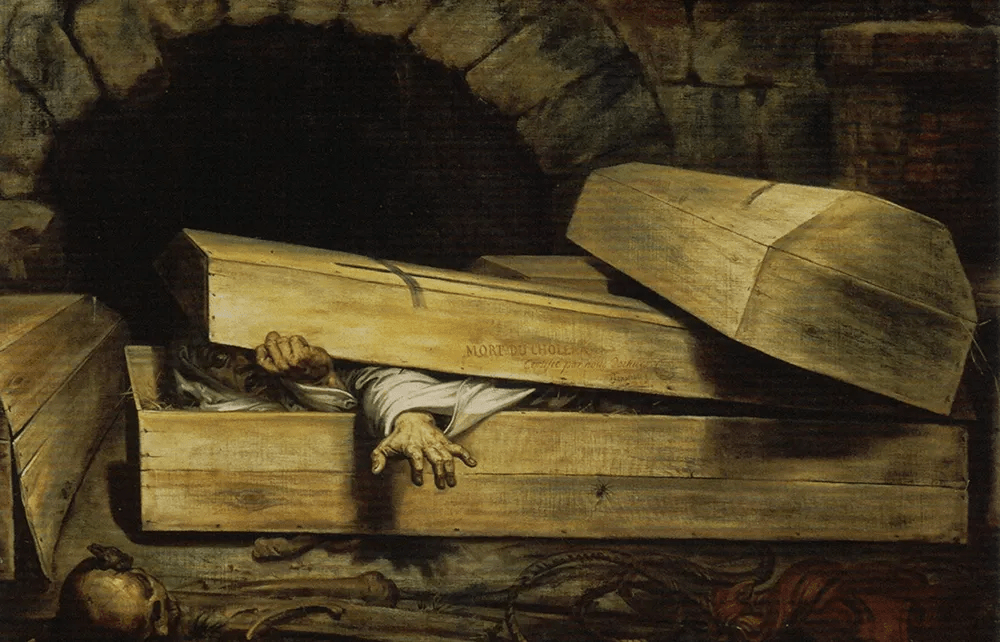Every summer, during our holiday in Scotland’s Orkney Islands, there is a moment of panic. We’re standing on a dizzying cliff — looking across a sleeve of sea at the Old Man of Hoy, maybe — and I’m consumed with a longing to fling myself over. It’s not suicidal. I just yearn to feel the wild rush of air against my cheeks: I want to fly. I’ve never met anyone who shares this compulsion, but The Book of Phobias and Manias assures me it’s quite common. Indeed, it has a name: acrophobia. Kate Summerscale understands it perfectly: “The whirl of vertigo,” she says, can “seem like the giddiness of yearning.”
A new book from Summerscale is always a treat. She does vast amounts of research, and then manages to let go of it, and take flight in prose that is both forensic and conversational. The Suspicions of Mr. Whicher and The Wicked Boy explore Victorian murders, and The Haunting of Alma Fielding reanimates an investigation into a poltergeist on the eve of World War Two. So Phobias and Manias, which burrows into our deepest fears and desires, might seem like a departure. But it’s not. Summerscale has again found herself bewitched by what Gerard Manley Hopkins called “All things counter, original, spare, strange.” The UK subtitle — “A History of the World in 99 Obsessions” — might echo Neil MacGregor, but this reads more like a book by Oliver Sacks, with dashes of Roald Dahl.
It’s arranged alphabetically, like a small encyclopedia: ornithophobia (fear of birds), osmophobia (smells), ovophobia (eggs) etc. And at the end of each entry is a list of obsessions that might fall broadly into the same category. So if you suffer from glossophobia (fear of public speaking) you might also want to read about erythrophobia (blushing) or gelotophobia (fear of being laughed at).
Some of the traits she investigates are familiar: arachnophobia, dipsomania, egomania. Some are bizarre. In 1374, people living on the banks of the Rhine were seized with choreomania, dancing for days until they dropped in exhaustion. Some died. Then there are phobias surely more witty than authentic: the fear of palindromes, aibohphobia (that is a palindrome, you’ll have spotted), or the horror of long words: hippopotomonstrosesquipedaliophobia (eat your heart out antidisestablishmentarianism — and pity the poor copy editor).
But most of the conditions Summerscale delves into are genuinely tormenting, and it’s these that linger in the mind. Taphophobia is a fear of being buried alive, and it flourished in the eighteenth century when it was fairly common for people to be too hastily pronounced dead. “Several coffins were dug up and opened to reveal cadavers with ripped nails, torn knees and bloodied elbows.” No wonder Chopin left instructions that his body be cut open prior to burial.
Almost as disturbing is dermatillomania, a condition that affects about 3 percent of the population, compelling sufferers to pick uncontrollably at stubby hairs, moles and pimples. A 1999 study described a woman “who so compulsively picked her neck that she exposed the carotid artery.”
“Some terrors are no sooner imagined than felt,” says Summerscale, and she enables us to inhabit even the most unlikely conditions. On koumpounophobia, the fear of buttons, she writes:”‘Buttons are to clothes as teeth are to bodies: bits that can come loose, fall off. And perhaps a dangling or detached button implies not just loss but exposure: an inadvertent opening.”
The further you get into the book, the more you begin to spot phobias in everything you read, hear, remember. I was concurrently reading A.N. Wilson’s terrific Confessions, in which he describes his overwhelming fear of water (aquaphobia) at prep school. It could have been cured by gentle exposure treatment, instead of which the sinister headmaster’s wife repeatedly ordered him on to a high diving board, prodding him with an umbrella until he plunged. The smell of chlorine and the sight of his local lido fill Wilson with horror to this day.
Reading the entry on agoraphobia, I thought of the poet George Mackay Brown, an acute sufferer, who could sometimes hardly walk down the street for fear of houses collapsing on him. When shortlisted for the Booker Prize, urged by his editor to travel south for the dinner, he found himself unable to leave his flat. He is perhaps the only author ever to have responded to a Booker shortlisting by asking his doctor for anti-depressants.
And when I came to claustrophobia, I had to reach down Robert Macfarlane’s Underland. I defy anybody to read the tale of the caver — and all too soon cadaver — Neil Moss in Derbyshire in 1959 without palpitations.
There are many household names who have lived with phobias for years: Johnny Depp with coulrophobia (fear of clowns), Oprah Winfrey with globophobia (balloons), Helen Mirren tokophobia (giving birth — so severe she has never been able to have children). All of these conditions and more, Freud — frequently quoted — put down to sex. Of pyromania he wrote: “The form and motion of the flame suggests the phallus in action.” But the psychologist Adam Phillips is more intriguing. Phobias, he believes, “vivify the world around us, lending it meaning and drama”: a phobia is “a way of making ordinary places and things extremely charged.”
My one concern about this book is where it will live. You need only look at the “Sources” to see that it is a serious work of scholarship. But I fear that the A-Z format and larky (though rather wonderful) illustrations will consign it to the spare bedroom or the toilet: a book to be dipped into, not properly read. That would be a pity, because getting the most out of it requires total immersion. “When I began to research,” Summerscale admits, “I did not think of myself as having any particular phobias… but by the time I’d finished I’d talked myself into almost every one.” She talked me into a few too. But I stopped short of pantophobia — fear of everything.
This article was originally published in The Spectator’s UK magazine. Subscribe to the World edition here.


















